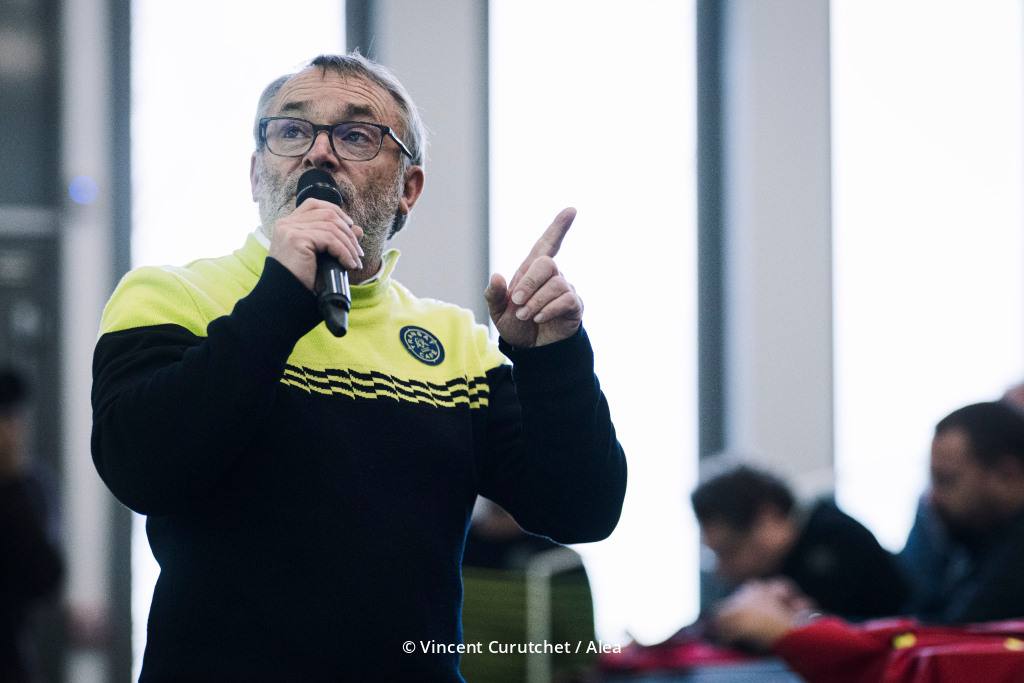
Race director of the Transat Café l’Or Le Havre – Normandie, Francis Le Goff reveals the technological behind-the-scenes of his job. From pre-race routing to sleepless nights in the trade winds, he explains how navigation tools have become indispensable for anticipating arrivals, monitoring multi-class fleets and making the right decisions when the weather gets complicated. Between strategic calculations on weather windows and testing the alarm system, discover how race management has become more professional over the years, from the Solitaire du Figaro to the Transat Café l’Or. With a juicy anecdote about a night watch that went wrong…
How long have you been using Adrena software?
I started using it as a race director on the Solitaire du Figaro, then on the Transat Paprec, the Transat Café l’Or (formerly Jacques Vabre), the Route du Rhum, the Transat CIC, the Sardinha Cup, and I’m sure I’m forgetting some. It’s now an essential tool for race management, because first of all we use the same equipment as sailors do. And above all, we have the opportunity to communicate with ADRENA’s technical support team to continuously improve the various functions so that they are suited as much as possible to our profession.
Your favourite feature ?
There isn’t just one, and they are all different! When preparing for races, we use the routing function a lot, especially in races like the Transat Café l’Or or the Route du Rhum – Destination Guadeloupe. These are multi-class races and we need to calculate for each of them, based on historical gribs, the chances of reaching the other side of the Atlantic and having some essential passage times. Especially when the weather is a bit complicated, it’s important to have fairly factual basis for decision-making. Are we able to pass through a particular low-pressure system with a group or not? It’s a function that we use a lot in routing, in race preparation, including to respond to requests from organisers and the media.
And during the race?
Here too it varies a lot; there isn’t just one specific function. Obviously, routing, because everyone is in a hurry, especially in the final phase. You have to know when the different classes are going to arrive. And then, during the race, there’s a function that was developed a while ago for alarms, which makes our job a lot easier. The races are attracting more and more people, so we have to use systems such as on-board radar or AIS monitoring to detect nearby vessels. This feature allows us to keep an eye on the speed of the boats, their course, and to put percentages on the speed or the polars. Simply put, these features allow us to be more efficient in tracking the competitors.
Any anecdotes to share?
I often work with Yann Château, who is also a race director and uses ADRENA. He is a huge fan of the software’s various features. And he likes to push ADRENA’s technical teams to their limits. So it’s also thanks to him that this alarm feature was developed…
Anyway, I remember it was during the Transat Paprec. The weather was calm, which allowed us to rest in the trade winds and not have to watch over the Figaro fleet 24 hours a day. But it was all new! We hadn’t counted on the fact that we didn’t yet have full control over all the alarms and that every time there was a gybe or a drop in speed… everything started ringing for the entire fleet, because we didn’t have the means to adjust it! It became a total nightmare, with pop-ups appearing everywhere on the screens! We had to go down a floor each time to stop it all. And as if that wasn’t enough, we amplified the alarms with a loudspeaker. In a rage, I ended up going downstairs and turning everything off! In the end, Yann had crept back upstairs so he could continue developing the alarm system, and ended up falling asleep on the floor. Proof that when you’re in charge of race management and you want to move forward with high-performance systems using ADRENA, you go all the way!